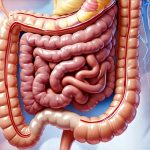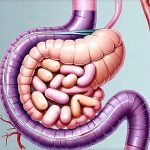The digestive system is often viewed as a straightforward process – break down food, absorb nutrients, eliminate waste. However, this simplistic view overlooks a complex interplay between our gut microbiome, immune system, and nervous system. Increasingly, research points to the gut’s crucial role in overall health, extending far beyond just digestion. Unexplained digestive upsets—bloating, abdominal pain, diarrhea, constipation – are frustratingly common, often dismissed as “sensitive stomach” or stress-related. But what if these symptoms aren’t simply a matter of dietary indiscretion or anxiety? What if they’re indicative of a deeper imbalance within the gut itself, specifically linked to histamine and its impact on digestive function?
Many individuals experiencing chronic digestive issues have explored numerous diets, undergone extensive testing, and consulted multiple specialists without finding lasting relief. This often leads to feelings of helplessness and frustration. The emerging field of gut health is revealing that these symptoms may be rooted in an overactive histamine response within the gastrointestinal tract. Histamine, a chemical messenger involved in immune responses, allergy symptoms, and stomach acid production, can become problematic when its levels are dysregulated. This imbalance can trigger inflammation and disrupt normal digestive processes, leading to a cascade of uncomfortable symptoms that mimic other conditions, making accurate diagnosis challenging.
Understanding the Gut-Histamine Connection
Histamine is naturally produced in the body, playing vital roles in various physiological functions. Within the gut, mast cells – immune cells residing in the intestinal lining – are primary producers and storage sites for histamine. Normally, histamine release is tightly controlled, but several factors can disrupt this balance, leading to excessive histamine levels. These include dietary triggers (fermented foods, aged cheeses, alcohol), imbalances in gut bacteria (specifically an overgrowth of histamine-producing bacteria and a lack of histamine-degrading bacteria), genetic predispositions affecting enzyme activity responsible for histamine breakdown (like DAO – Diamine Oxidase), and even chronic stress. When histamine levels become too high, it can lead to increased intestinal permeability (“leaky gut”), heightened inflammation, and disruption of digestive processes like motility and enzymatic function. This creates a vicious cycle where inflammation further compromises the gut barrier and exacerbates histamine release. Understanding this connection is paramount; exploring gut microbiota can provide valuable insight.
The symptoms of histamine intolerance or overproduction are diverse, making diagnosis difficult. Beyond the typical digestive complaints (bloating, diarrhea, abdominal pain), individuals may experience skin rashes, headaches, fatigue, nasal congestion, and even anxiety. These seemingly unrelated symptoms can be a hallmark of systemic histamine overload. It’s important to note that histamine intolerance isn’t an allergy in the traditional sense; rather, it represents a functional impairment in the body’s ability to metabolize histamine effectively. This means individuals aren’t necessarily allergic to histamine, but their system is unable to break it down quickly enough, leading to accumulation and subsequent symptoms.
Furthermore, the gut microbiome plays a crucial role in modulating histamine levels. Certain bacterial species contribute to histamine production (e.g., Klebsiella, Eubacterium), while others help degrade it (e.g., Lactobacillus, Bifidobacterium). An imbalance – dysbiosis – can significantly impact the overall histamine burden, tilting the scales towards excess levels and triggering digestive upset. Restoring microbial balance through targeted probiotic supplementation and dietary changes is often a key component of managing histamine-related digestive issues. Considering polyphenols in your diet can also support beneficial gut bacteria.
The Role of DAO Enzyme Deficiency
Diamine Oxidase (DAO) is an enzyme primarily responsible for breaking down ingested histamine in the gut, preventing its systemic absorption. Individuals with low DAO activity are less efficient at metabolizing histamine from food, leading to increased levels in the bloodstream and subsequent symptoms. DAO deficiency can be genetic, acquired (due to conditions like inflammatory bowel disease or small intestinal bacterial overgrowth – SIBO), or influenced by dietary factors. Diagnosing DAO deficiency is possible through a blood test that measures DAO activity, but it’s often overlooked as a potential cause of digestive problems.
Low DAO levels combined with a high-histamine diet can create a perfect storm for histamine intolerance. Foods rich in histamine (fermented foods, aged cheeses, smoked fish) or histamine liberators (alcohol, citrus fruits, tomatoes) put an extra burden on the system, overwhelming the already compromised enzymatic capacity. This leads to increased permeability of the intestinal lining – often termed “leaky gut” – allowing more histamine and other inflammatory substances into the bloodstream, triggering systemic symptoms. Addressing DAO deficiency involves a multi-faceted approach: reducing dietary histamine intake, supporting gut health to improve enzyme production, and potentially supplementing with DAO enzymes before meals containing histamine-rich foods. This is where understanding histamines becomes crucial for effective management.
Identifying Histamine Triggers & Dietary Strategies
- High-Histamine Foods: Fermented foods (sauerkraut, kimchi, yogurt), aged cheeses, smoked meats/fish, alcohol (especially red wine), vinegar-containing foods, spinach, eggplant, tomatoes, avocados, citrus fruits.
- Histamine Liberators: Alcohol, bananas, chocolate, shellfish, strawberries, pineapple.
- Gut-Healing Foods: Bone broth, probiotic-rich foods (kefir, sauerkraut – in limited amounts if histamine intolerant), prebiotic-rich foods (garlic, onions, asparagus), fiber-rich vegetables.
A low-histamine diet isn’t necessarily a long-term solution but can be incredibly helpful for identifying triggers and reducing the overall histamine burden. It’s often recommended to start with an elimination diet, removing potential triggers for a period of time and then gradually reintroducing them one at a time to assess tolerance. Maintaining a food diary is crucial during this process to track symptoms and pinpoint specific problem foods.
The Impact of SIBO on Histamine Levels
Small Intestinal Bacterial Overgrowth (SIBO) – an excessive amount of bacteria in the small intestine – can significantly contribute to histamine-related digestive issues. Bacteria within the small intestine ferment undigested carbohydrates, producing gas and triggering inflammation. More importantly, certain bacterial species prevalent in SIBO are histamine producers, exacerbating the overall histamine burden. This creates a vicious cycle: SIBO leads to increased histamine production, which further disrupts gut motility and compromises the intestinal barrier, creating an even more favorable environment for bacterial overgrowth.
Diagnosing SIBO typically involves a breath test that measures hydrogen and methane levels after consuming a specific sugar solution. Treatment often involves antibiotics or herbal protocols designed to reduce bacterial populations, combined with dietary modifications (like a low-FODMAP diet) to starve the bacteria of their food source. Addressing SIBO is crucial for restoring gut balance and reducing histamine production.
Restoring Gut Microbiome Balance & DAO Support
A healthy gut microbiome is essential for regulating histamine levels. Probiotic supplementation, particularly with strains known to degrade histamine (e.g., Lactobacillus rhamnosus, Bifidobacterium infantis), can help restore microbial balance and reduce the overall histamine burden. However, it’s important to choose probiotics carefully, as some strains may actually contribute to histamine production.
Alongside probiotics, supporting DAO enzyme activity is crucial. This can be achieved through dietary modifications (reducing histamine intake) and potentially supplementing with DAO enzymes before meals containing histamine-rich foods. Lifestyle factors like stress management are also essential, as chronic stress can negatively impact gut health and exacerbate histamine release. A holistic approach that addresses diet, microbiome balance, enzyme support, and stress management is often the most effective strategy for managing histamine-related digestive upset and restoring long-term gut health. Understanding gut bacteria can help you make informed decisions about your diet and lifestyle. Furthermore, exploring detox symptoms related to gut health provides a broader perspective on overall well-being. Finally, the impact of fermented grains on your gut flora is essential knowledge for maintaining optimal digestive health.


















